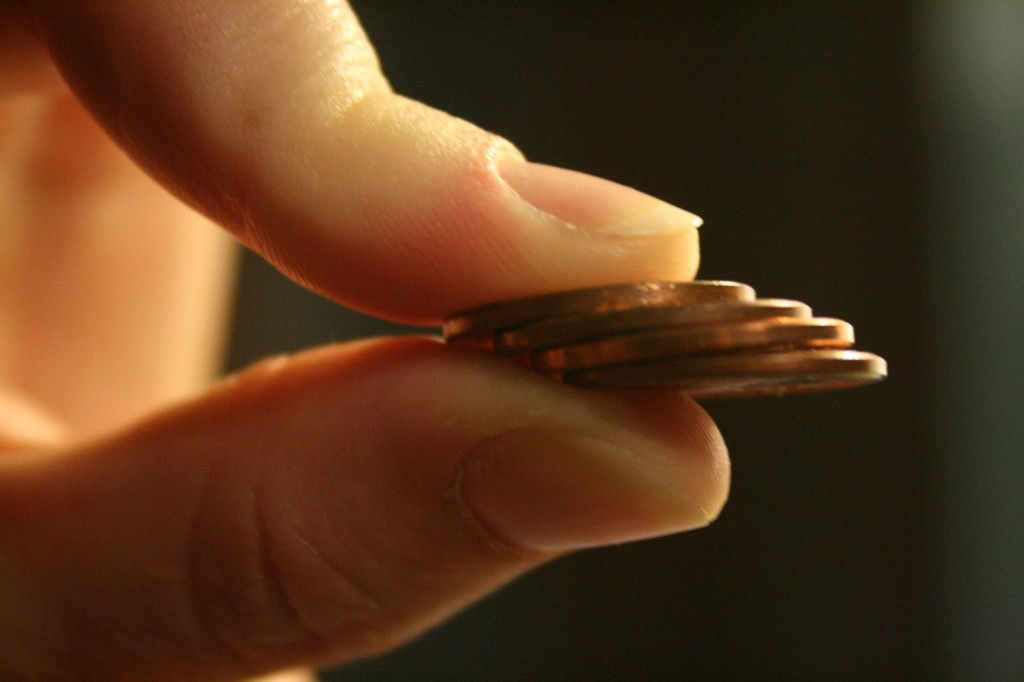Kudos yet again to everyone’s favorite purveyor of pointless personal finance advice, Trent Hamm of The Simple Dollar. Our hero has discovered a groundbreaking new way to avoid the tartar and dental caries that have plagued mankind since we started walking upright. Tired of having a smile that looks like a truck drove through it? You’re not going to believe how easy it is to solve that particular problem. Check out Trent, coming hard with the wisdom on November 5, 2009:
Brush your teeth. An unclean mouth is a perfect place for unwanted bacteria and germs to take root. Good oral hygiene reduces the chance for bacteria to grow in your mouth.
(Italics and boldface his.) And because repetition is the key to education, here’s another golden excerpt, this one from February 28, 2008:
Brush your teeth every day and floss them, too. Also, visit the dentist sometimes to make sure your teeth are still in good shape.
A clean mouth and clean teeth give you a nice smile and fresh breath, both of which are major positives for one’s personal appearance. It just takes a good scrubbing in the morning to cause it, so don’t skip over brushing your teeth.
No one’s going to remember something that complicated, so here’s yet another passage, from November 16, 2006:
Practice strong oral hygiene and use a strong mouthwash. Brush your teeth thoroughly at least twice a day; your breath is a key part of your appearance and “cover up” items such as Tic-Tacs often only work for a short while. It’s much better for your appearance to make sure your mouth is truly clean.
And finally (finally for our purposes, that is. We’re pretty sure Trent will still have much more to say about the value of brushing one’s teeth), here’s one from January 23, 2010:
…clean your teeth. If you have a habit of using more than just a dab of any product, read the directions and make sure you’re not over-using. If you’re using three times as much as you should, you’re buying three bottles for every one you actually need to buy.
Get the last little bit out. When the toothpaste tube seems empty, put the cap back on and cut off the bottom – you can still squeeze out a surprising amount.
Okay, so now that Trent has established that a good way to preserve the health of your teeth is to…
/going back to check, making sure we get it right
brush them, how to do so? Presumably, you’re going to need toothpaste to accomplish this bit of hygienic sorcery.
Aim is the cheapest toothpaste in existence. You don’t have to look hard to find it selling for around $1 for a 6-ounce tube. That’s less than a penny a brushing. Or as Trent would describe it, highway robbery courtesy of those rapacious capitalists at Church & Dwight.
Trent was tired of Big Sodium Bicarbonate profiting off the mouths of the 99%. True to his pathologically frugal nature, he devoted a recent post to, of course, making your own toothpaste. At this point, we’re fairly impressed that he deigns to spew this drivel via a commercially manufactured computer, instead of one that he grew from saplings in his back yard. From last March 1:
The best recipe I’ve found is mixing 1/2 cup baking soda, 1/4 cup hydrogen peroxide, a packet of stevia (a natural sweetener that also is good for your teeth), and either a dash of cinnamon or a drop or two of peppermint oil (for flavor). Mix these together until they form a paste.
The baking soda and the hydrogen peroxide in the quantities required will run you about 30¢. Not to go Trent on you and spend inordinate amounts of time calculating minutiae, but we’re going somewhere with this. Trent continues:
For dispensing it, just head to the travel toiletries section of your local department store and pick out a small empty travel squirt container.
Yes, because when you’re already in the drugstore, it’s SO MUCH EASIER to pick out baking soda, hydrogen peroxide, stevia (assuming they sell stevia at Walgreens), cinnamon and/or peppermint oil, and small empty travel squirt containers, than to just walk over to aisle 6 and drop a single George Washington on a tube that someone else already went to the trouble of filling and sealing.
Oh, and is there anything missing from that list of ingredients? That is, between the sugar substitute and the chemical they use to clean bathroom tile with?
How about SODIUM FLUORIDE? You know, the ionic compound whose discovery spawned modern preventative dentistry as we know it? The stuff that does to cavities what The Simple Dollar does to common sense?
Look, we try to avoid all caps and boldface as much as possible. The intensity of our words alone should be enough. But good Lord, this idiot’s Rube Goldbergian methods are now going too far. Trent Hamm claims 750,000 or something readers per month. NONE of them have attempted to brew up a batch of Trent’s dangerous and counterproductive homemade dentifrice, probably not even the author himself. Which is good, because otherwise their teeth would start falling out. This NaHCO3H2O2 bouillabaisse of Trent’s creation is literally a recipe for disaster. What an imbecile.




